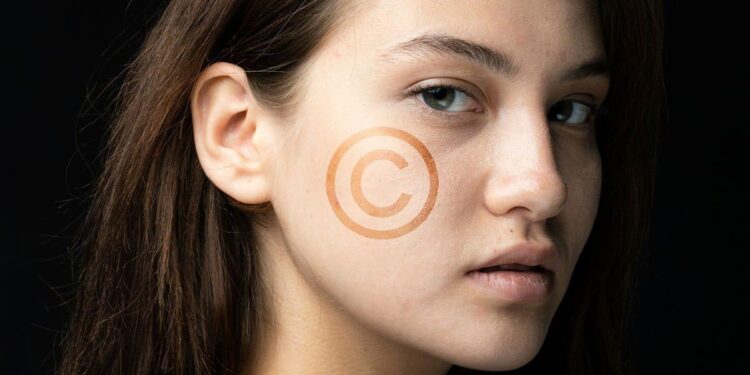Denmark is set to break new ground in intellectual property law by extending copyright protections to include individuals’ faces and voices, a move that could have significant implications for media, entertainment, and personal privacy. The proposed legislation aims to safeguard personal identity from unauthorized commercial use, reflecting growing concerns over digital exploitation and the misuse of biometric data. As Denmark pioneers this approach, the international community watches closely to gauge its impact on copyright norms and individual rights in the digital age.
Denmark Expands Copyright Law to Include Faces and Voices
In a landmark legal development, Denmark has amended its copyright regulations to encompass individuals’ faces and voices, marking one of the first European countries to extend intellectual property protections into this realm. This expansion aims to safeguard personal identity elements that are commonly exploited in media, advertising, and digital platforms without consent. The law empowers individuals to control the commercial use of their likeness and vocal expressions, potentially transforming how public figures, influencers, and everyday citizens manage their personal brand and privacy rights.
Key features of the updated framework include:
- Exclusive rights over the commercial exploitation of one’s face and voice.
- Legal recourse against unauthorized digital recreations, including deepfakes and synthesized audio.
- Clearer consent protocols for media producers, advertisers, and content creators.
- Protection periods aligned with traditional copyright terms, spanning the creator’s lifetime plus 70 years.
| Aspect | Previous Status | New Regulation |
|---|---|---|
| Protection Type | None | Copyright Extension |
| Scope | Traditional works & images | Faces & Voices included |
| Consent Requirement | Informal or none | Explicit written consent |
| Enforcement | Limited | Legal penalties for violations |
Legal Experts Weigh Implications for Privacy and Creative Industries
Legal authorities and intellectual property experts are expressing both concern and cautious optimism regarding Denmark’s groundbreaking move to extend copyright protection to individual facial features and vocal expressions. This legislative shift pushes the boundaries of traditional copyright law, which historically safeguarded creative works but did not cover personal attributes. Critics argue that such an expansion risks infringing on privacy rights and could open the door to commercialization of personal identity, while proponents see it as a necessary evolution to protect individuals from unauthorized use of their likenesses in advertising, media, and digital content.
The creative industries stand at a crossroads as this law may significantly impact content creation, licensing, and media production practices. Industry insiders warn of potential challenges in obtaining clearances and increased legal disputes, especially in fields reliant on celebrity imagery and voiceovers. Below is a summary of expert opinions on the possible outcomes:
- Privacy advocates: Highlight risks of surveillance and exploitation without explicit consent.
- Intellectual property lawyers: Emphasize the need for clear guidelines to avoid ambiguity in enforcement.
- Content creators: Anticipate increased costs and complications in intellectual property management.
- Performers’ unions: Welcome stronger protection against unauthorized commercial use.
| Stakeholder | Primary Concern | Potential Impact |
|---|---|---|
| Privacy Groups | Loss of Autonomy | Heightened Personal Surveillance |
| Media Producers | Complex Licensing | Delayed Productions, Higher Costs |
| Performers | Unauthorized Use | Better Control and Compensation |
| Legal Experts | Definitional Boundaries | Demand for Detailed Regulation |
Guidance for Content Creators Navigating New Intellectual Property Rules
Content creators in Denmark now face enhanced protections for personal likenesses, as the government extends copyright coverage to include faces and voices. This landmark change means that recording or reproducing an individual’s image or vocal identity without explicit permission could lead to legal repercussions. For creators, especially those working in video, podcasting, and livestreaming, this calls for heightened vigilance in securing consent and managing rights to avoid infringing on newly formalized protections.
To adapt effectively, creators should consider the following best practices:
- Secure Written Consent: Always obtain clear, written permission when featuring someone’s face or voice in content.
- Review Licensing Agreements: Check contracts thoroughly for clauses related to personal image and voice usage.
- Monitor Content Rights: Keep detailed records of permissions to defend against potential claims.
- Stay Updated: Follow evolving legal guidelines as enforcement and interpretations develop.
| Type of Use | Permission Required | Potential Legal Impact | ||||||||
|---|---|---|---|---|---|---|---|---|---|---|
| Recording public events | Yes, for close-ups and voices | Fines, content removal | ||||||||
| Archival clips with identifiable persons | Often yes, especially for commercial use | Monetary damages possible Content creators in Denmark now face enhanced protections for personal likenesses, as the government extends copyright coverage to include faces and voices. This landmark change means that recording or reproducing an individual’s image or vocal identity without explicit permission could lead to legal repercussions. For creators, especially those working in video, podcasting, and livestreaming, this calls for heightened vigilance in securing consent and managing rights to avoid infringing on newly formalized protections. To adapt effectively, creators should consider the following best practices:
|
















